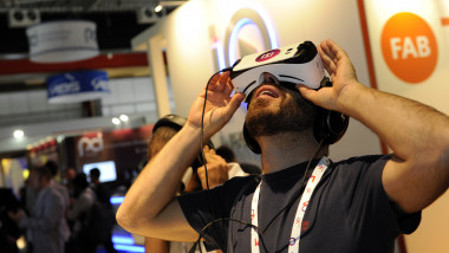Reporters use handheld "vocal booth" mic in war coverage
With the wind whipping sand in their face, helicopters whirring overhead and a variety of all-consuming noises of war surrounding them, reporters in Iraq have been forced to improvise when it comes to being heard. That's why ABC, CBS and the BBC, to name a few, have eschewed sophisticated digital technology for a handheld "portable vocal booth" microphone designed in the 1950s.
The 10-ounce mic resembles a hammer in a ruggedized brass perforated case with nose and mouth screens made of stainless steel woven mesh.
It's officially called the Coles 4104 Commentator's Ribbon Microphone, but commentators like ABC's Ted Koppel have referred to it on-air as "the lip mic." Designed by BBC engineers in the mid-1950s, the lip mic captures intelligible speech in areas of high background noise, places such as battlefields or in airborne helicopters.
Although the 4104 are thoroughly battle-proven, it has one big downside for on-camera television reporters. The microphone's odd design covers the reporter's mouth while talking, causing some very weird pictures to reach home viewers. It's called the "lip mic" because its metal positioning bar crosses the upper lip.
The 10-ounce mic resembles a hammer in a ruggedized brass perforated case with nose and mouth screens made of stainless steel woven mesh. The unit is covered with a brown rubber-like PVC material.
In Europe, Coles Electroacoustics still makes the 4104 for situations such as the war with Iraq. It offers better than 30dB average discrimination between voice and background noise, while maintaining natural-sounding speech. The mic's pressure gradient ribbon design has extensive acoustic damping and a flat frequency response (60 Hz to 12,000 Hz) at the controlled talking distance. The company said it also produces very low breath noise.
The enduring 4104 is available from Audio Engineering Associates, located in Pasadena, Calif., which is the only company in the U.S. authorized to provide factory-approved repair.
The professional video industry's #1 source for news, trends and product and tech information. Sign up below.
For more information visit www.wesdooley.com.
